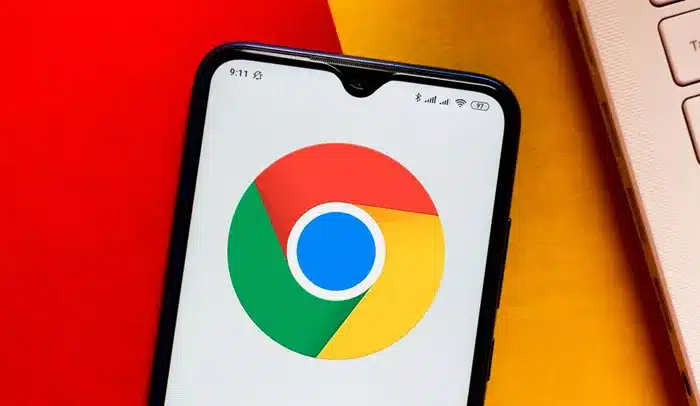In today’s digital world, privacy and security are more important than ever. Using a proxy in your browser can provide an extra layer of protection by masking your IP address and encrypting your data. If you’re using Google Chrome on your Android device, setting up a proxy can help you stay secure while browsing the internet.
What is a Proxy?
A proxy acts as an intermediary server that sits between your device and the websites you visit. When you use a proxy, your requests to websites are routed through the proxy server, which then forwards them to the target website. The website responds to the proxy server, which sends the data back to your device. This process masks your actual IP address and provides anonymity while browsing the web.
Why Use a Proxy in Chrome on Android?
There are several reasons why you might want to use a proxy with Chrome on your Android device:
- Privacy Protection: A proxy can hide your real IP address, making it harder for websites to track your online activity.
- Bypass Geo-Restrictions: A proxy allows you to access content that may be restricted in your region by making it appear as though you’re browsing from a different location.
- Secure Browsing: Proxies can help protect your data by encrypting the traffic between your device and the server, preventing hackers and third parties from accessing your information.
Step-by-Step Guide to Setting up a Proxy in Chrome on Android
Setting up a proxy in Chrome on Android is straightforward. However, it’s important to note that Chrome for Android doesn’t have built-in proxy settings. You will need to configure the proxy settings in your device’s network settings, which will affect all applications, including Chrome.
Step 1: Get the Proxy Details
Before you begin, make sure you have the necessary details for the proxy server. These include:
- Proxy Server Address: The IP address or hostname of the proxy server.
- Port Number: The port through which the proxy communicates, typically 8080 or 3128 for HTTP proxies.
- Username and Password: Some proxies require authentication. Make sure you have your credentials handy if needed.
Step 2: Open Device Network Settings
To configure the proxy, you’ll need to access the network settings on your Android device:
- Go to your device’s Settings menu.
- Scroll down and tap on Network & Internet.
- Tap Wi-Fi and connect to the Wi-Fi network you want to configure the proxy for.
Step 3: Modify Proxy Settings
Once you’re connected to a Wi-Fi network, you can modify the proxy settings:
- Tap on the Wi-Fi network you’re connected to.
- Scroll down and tap on Advanced.
- In the Proxy section, choose Manual.
- Enter the proxy server address and port number that you received earlier.
- If required, enter your username and password for authentication.
Step 4: Save and Test the Proxy
Once you’ve entered the proxy details, save the settings and test the configuration:
- Tap Save to apply the proxy settings.
- Open Google Chrome on your Android device and visit any website to test the connection.
- If the website loads without any issues, the proxy has been successfully configured.
Tips for Using Proxies in Chrome on Android
Here are a few tips to make sure you’re using proxies effectively:
- Check for Leaks: Use online tools to check for any IP or DNS leaks that may reveal your real location, even when using a proxy.
- Choose Reliable Proxies: Always use a trusted and reliable proxy provider to ensure your data remains secure.
- Test Your Speed: Proxies can sometimes slow down your internet connection. Test the speed regularly to ensure the proxy doesn’t significantly impact your browsing experience.
Alternative Methods to Use a Proxy in Chrome on Android
If the manual proxy setup method is not suitable for you, there are alternative options:
- Use a VPN: A VPN (Virtual Private Network) is another effective way to route your internet traffic through a secure server, masking your IP address and encrypting your data. Some VPNs offer dedicated apps for Android, which makes it easy to connect and secure your connection.
- Proxy Apps: There are various apps available in the Google Play Store that can configure proxy settings for you. These apps offer easy-to-use interfaces for setting up and managing proxies on your Android device.
Common Issues with Using Proxy in Chrome on Android
While using proxies in Chrome on Android can be beneficial, it can also come with a few challenges:
- Connection Issues: If you’re having trouble connecting to websites after setting up the proxy, ensure that the proxy server address and port number are correct.
- Authentication Problems: Double-check your username and password if the proxy requires authentication. Incorrect credentials can prevent you from accessing the internet.
- Slow Internet: Proxies can sometimes slow down your connection. If you experience slow speeds, consider switching to a different proxy server or using a VPN instead.
Conclusion
Using a proxy in Chrome on Android is a simple yet effective way to enhance your online privacy and security. By following the steps outlined in this guide, you can configure a proxy server on your Android device and browse the internet safely and anonymously. If you’re looking for additional features, consider using a VPN or a proxy management app for even more control over your online experience.


